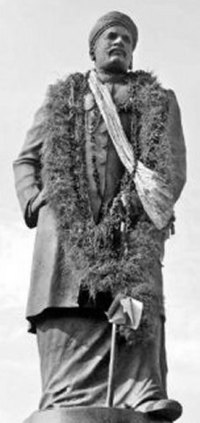Pulayar
Appearance
 | |
| Regions with significant populations | |
|---|---|
| Languages | |
| Malayalam | |
| Religion | |
| Hinduism, | |
| Related ethnic groups | |
| Parayar |
The Pulayar (also Pulaya, Pulayas) are an untouchable caste[1] in Hinduism, forming one of the main social groups in modern-day Kerala and Karnataka as well as in historical Tamil Nadu or Tamilakam.
Traditions
Pulayars are noted for their music, craftsmanship, and for certain dances which include Kōlam-thullal, a mask dance which is part of their exorcism rituals, as well as the Mudi-āttam or hair-dance which has its origins in a fertility ritual.[2][3][4]
Demography
According to the 2001 Census, the Pulayan population in Kerala was 1,041,540, being 3.27 per cent of the total population.[5]
Notable people
- Ayyankali (1863 - 1941), social reformer
- K. P. Vallon (1894 - 1940), social reformer
- Pampady John Joseph (1887-1940 ), social reformer
See also
Arts of Pulayar caste:
References
- ^ Moffatt, Michael (2015). An Untouchable Community in South India: Structure and Consensus. Princeton University Press. p. 42. ISBN 978-1-40087-036-3.
- ^ "PRIMAL ELEMENTS:THE ORAL TRADITION".
- ^
"Early Evidence for Caste in South India, p. 467-492 in Dimensions of Social Life: Essays in honor of David G. Mandelbaum, Edited by Paul Hockings and Mouton de Gruyter, Berlin, New York, Amsterdam, 1987".
{{cite journal}}: Cite journal requires|journal=(help) - ^ http://www.soas.ac.uk/research/publications/journals/ijjs/file46109.pdf
- ^ http://censusindia.gov.in/Tables_Published/SCST/dh_sc_kerala.pdf
